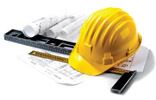Architectural Engineering and Construction, Durham School of

Durham School of Architectural Engineering and Construction: Faculty Publications
Document Type
Article
Date of this Version
2012
Citation
Educ. Sci. 2012, 2, 136-149; doi:10.3390/educsci2030136
Abstract
The cross-disciplinary nature of energy-efficient building design has created many challenges for architecture, engineering and construction instructors. One of the technical challenges in teaching sustainable building design is enabling students to quantitatively understand how different building designs affect a building’s energy performance. Concept based instructional methods fall short in evaluating the impact of different design choices on a buildings’ energy consumption. Building Information Modeling (BIM) with energy performance software provides a feasible tool to evaluate building design parameters. One notable advantage of this tool is its ability to couple 3D visualization of the structure with energy performance analysis without requiring detailed mathematical and thermodynamic calculations. Project-based Learning (PBL) utilizing BIM tools coupled with energy analysis software was incorporated into a senior level undergraduate class. Student perceptions and feedback were analyzed to gauge the effectiveness of these techniques as instructional tools. The findings indicated that BIM-PBL can be used to effectively teach energy-efficient building design and construction.
Included in
Architectural Engineering Commons, Construction Engineering Commons, Environmental Design Commons, Other Engineering Commons


Comments
Copyright © 2012, the authors. Licensee MDPI, Basel, Switzerland. Open access, Creative Commons Attribution license 4.0.